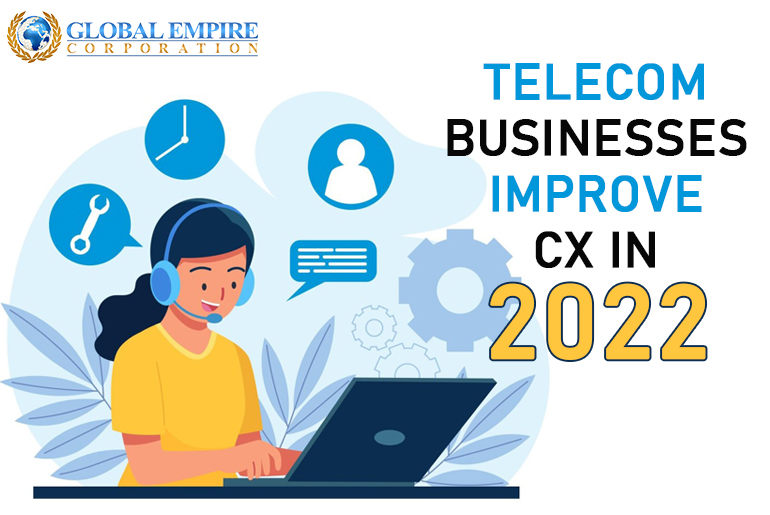According to research, optimizing the consumer experience in telecom is much more critical than ever. This post will examine why providing a strong, good CX is critical for telecoms firms. Then, we’ll look at five distinct tactics that industry leaders have effectively used to enhance their customer support experience.
According to a survey, 41% of US customers prefer to speak with a live person over the phone to settle difficult problems such as payment disputes or complaints. This demonstrates the critical importance of telecom businesses taking customer experience seriously.
Unprecedented expansion in telecommunications brands has occurred, which increases the need for customer experience support solutions for the telecom industry. Take a step back and assess the brand’s existing customer experience status before moving forward with a deeper customer connection. In what areas does their customer experience delivery meet or fall short of consumer expectations?
Get real-time insight
The majority of CSPs have a wealth of data on service delivery performance but no mechanism for turning it into actionable insights that improve the customer experience. While performance undoubtedly contributes to CX, many CSPs will need to strengthen their capacity to collect data on the whole customer experience.
Additionally, CSPs should collect anonymous, direct feedback from consumers and customer-facing personnel, as well as self-identified input. This will enable unambiguous follow-up to identify instances of poor CX and develop relevant response measures.
Customized approach
Telecommunications companies should begin by taking a two-pronged, user-centric strategy. Apart from new goods and services, the network’s quality must be prioritized. Inadequate network coverage is one of the key concerns hurting the telecom industry’s customer experience.
There are reasons why businesses should outsource outbound call center services, especially when the customer experience lens indicates that a product falls short of fundamental consumer expectations. The product may be doomed from the start. By delivering a high-quality network and reliably meeting fundamental expectations, telecoms firms provide a strong foundation to grow their offerings.
Another step toward client happiness and development is to make all services and goods as simple and clear as possible. Providers should focus on simplifying their product and service offerings rather than increasing the number of options available. For example, service companies may save money and time by automating their ticket management processes.
It is good to get customer experience management services for all businesses in the USA to streamline invoicing and cut down on service faults. It’s worth the effort to apply these difficult solutions for improved customer service in the telecom business. Customers will be happier and businesses will prosper because of these efforts.
Digitization
The telecom industry is already one of the sectors that have moved to a high level of process digitization — as a result, there is significant pressure on telcos to demonstrate that they are the best of the best. According to Arthur D. Little, telcos “should digitalize both their consumer interfaces and operations/backends by using more open architectures.”
Perhaps one area for the difference is the possibility of a transition to cloud computing. Also, research indicates telecom has been hesitant to migrate its analytics apps to the cloud. They may simplify their digital journeys while also enhancing the digital procedures to obtain their offerings.
Big Data and Analytics
The most successful telecommunications firms use a set of Key Performance Indicators (KPIs) to measure and improve customer satisfaction. As a result, they can grow to meet the demands of their customers. A wide range of critical indications may be used to gauge the performance of a website, including download speeds and customer comments.
There are many advantages of outsourcing customer support for your business, especially with telecommunications businesses constantly examining the data collected from customer discussions. They evaluate whether plans and tactics work as expected and identify any mismatches or communication gaps. By analyzing client interactions across several touchpoints, they want to provide a more tailored experience for each customer.
Conclusion
Whether it’s data from health, leisure, fitness, financial, and social media applications; insights gleaned from client encounters at physical touchpoints; or sociodemographic data, telecom providers have mountains of data at their disposal.
Among other approaches, partnering with our call center outsourcing company enable you to access advanced analytics, giving valuable insight into peak use periods. This allows providers to intervene pro-actively in the event of network congestion.
Similarly, systematic collection of individual customer data enables operators to differentiate between high-value consumers and those eager to move. To avoid revenue loss, it makes sense for telecom providers to concentrate their efforts on their highest-value clients.
From a customer experience standpoint, telecom providers must supply flawlessly functioning goods and add value to current services. The pandemic increased the importance of digital touchpoints. That is why existing digital platforms should be extended, including websites, smartphone applications, and specific social media channels.
Also Read: Customer Experience Strategy That Can Help Your Business Be Successful





